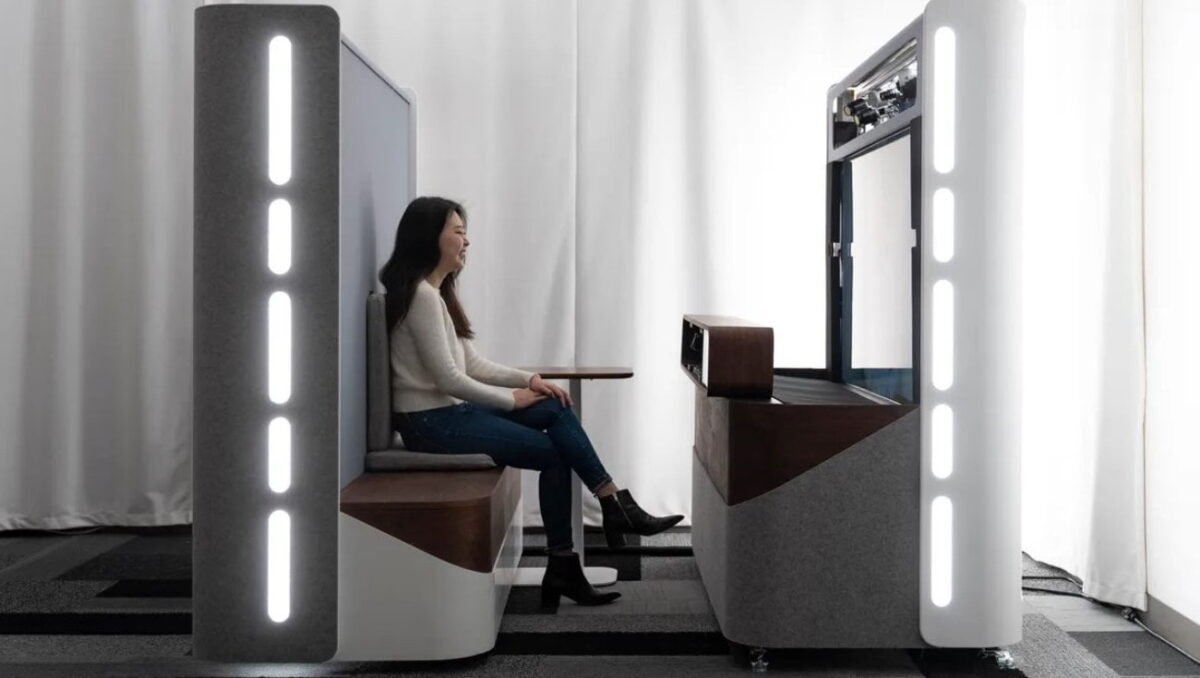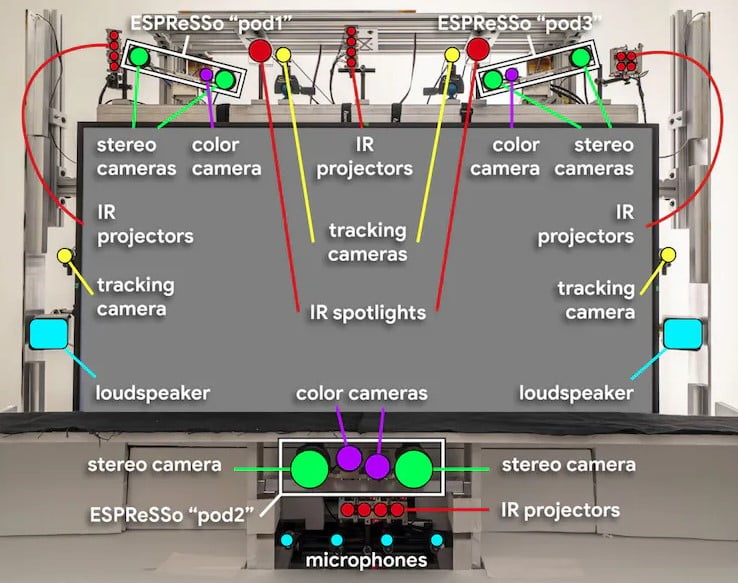Google's holo-video call booth "Starline" is said to feel like sci-fi

Google wants to take video conferencing to the next level with Project Starline. New field reports are full of praise. However, there are still many question marks.
Google first introduced Starline in May 2021. The holo-phone cell scans people in real time and transfers them three-dimensionally to a 3D display. A conversation is supposed to feel like it's being held through a pane of glass.
The downside: Starline requires a lot of space and technology that costs thousands of U.S. dollars, so you can't use it at home unless you're wealthy and live in a considerable house. And then you need a friend who is also wealthy and lives in a big house, too.
Anyway, Google is focusing on the enterprise market for now.
Since the presentation, Google has barely commented on Starline. However, if you thought the project was already in the Google graveyard, you're wrong: the Starline project is alive and well and is just being rolled out to the first companies.
In addition to announcing the collaboration with U.S. companies like T-Mobile and Salesforce, Google also let two tech journalists test Starline - and they are full of praise.
"Something like Starline has to be part of our future".
Jay Peters of The Verge describes his Starline experience as "the real deal." He says the 3D renderings of people are very high quality, though not perfect upon closer inspection, virtual shadow effects believably complement the scene, and audio and video transmission are free of noticeable latency.
The 3D depth effect is so good, according to Peters, that he was able to estimate how far his conversation partner was holding an apple in front of his body. The Starline call is "much more natural than a Zoom call," Peters writes, and eye contact is also possible. A conversation felt like a conversation, Peters says, with Starline being like "real life science fiction."
Conversations with Starline are said to feel like they're happening through a pane of glass. | Video: Google
"After experiencing Starline for myself, I’m now on board with the idea that better telepresence can have a meaningful impact on virtual interactions, and I feel as if something like Starline must be in our future — even if that future is years away and hopefully isn’t a giant video booth," Peters writes.
"Weirdly calming. Oddly immersive."
Cnet's Scott Stein uses these words to describe his 30-minute Starline call. The video chat felt "holographic" and "kind of like AR," Stein says. Starline combined the sense of presence of VR conversations with the video chat advantage of being able to see the real face.
Eye contact felt "perfect" without having to make sure to look specifically at a camera. Starline scans a cube of about one meter, in which all movements are captured and transmitted in 3D. Objects held in the hand are also transferred in 3D.
The resolution of Starline is not as sharp as in real life, worse than the experience with a 4K display, and the 3D representations of the call participants also have some visual flaws, Stein writes. In exchange, Starline would add a whole new level of sense of presence.
"It totally did seem like some wild magic trick, but it also started to feel like a face-to-face experience versus some sort of Zoom."
Miniaturization and price are the big question marks
Starline is still at an early stage, according to Google, and is not a product yet. In addition, the technology has limitations: the size of the cabin, the likely high manufacturing price, although Google does not give a specific figure, and the fact that only one-to-one conversations have been shown so far.
Starline's miniaturization is also not a given, as the size of the screen and placement of the camera can be preconditions for full-body transmission.

Project Starline's setup is complex, expensive, and requires a lot of space. | Image: Google
It's no coincidence that Google saved its Starline communication for the week Meta unveiled its future technologies for better VR telepresence: The company wants to present Starline as an alternative to telepresence without a headset. Google's AR and VR boss Clay Bavor made this clear at the first Starline presentation.
Perhaps Google is on the right track: the answer to annoying, exhausting videoconferencing is simply better, more sophisticated videoconferencing instead of 3D worlds and cartoon avatars. But of course, it's not an either/or situation. Headset telepresence also has a raison d'être.
Google will continue to research headset technology: Project Iris is set to be a Quest Pro-style mixed reality headset and, according to earlier rumors, will be launched together with Starline in 2024.
Note: Links to online stores in articles can be so-called affiliate links. If you buy through this link, MIXED receives a commission from the provider. For you the price does not change.